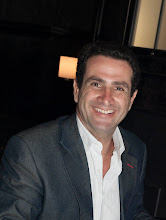Again welcome to all the new readers to the newsletter, hope your bonsai’s are doing well and you are enjoying your new found hobby.
Annual show.
The annual Gold Coast and Tweed Bonsai show is on again this year at the Robina Town Centre. It is held in the Large auditorium outside the centre at the David Jones end. The show will be on the 10th and 11th of November. This is a great opportunity to see a wide range of styles and presentations reflecting the different aspects of Bonsai. These sort of events are a real source of inspiration and learning. You will be amazed at what can actually be done with different species.
There will also be demonstrations by Robert Stevens from Indonesia who was here last year for the AABC convention last year and was very popular. His approach to Bonsai is a little different but definitely one for pushing the boundaries, and a real gentleman! The show will have probably in excess of 200 Bonsai to view.
Tools
I find myself talking more and more to people about the type of tools they are using for bonsai.
The first aspect of tools is the steel that they are made from. Many of us just think steel is steel but it couldn’t be further from the truth.
In the process of steels manufacture, different methods are used to produce steel in varying degrees of “hardness”. What this translates to is that a cutting tool that is made of a hard steel will hold its cutting edge much longer, it is also able to get a much sharper edge. What this means to us Bonsai folk is that when cutting a branch or a stem, we want to make sure we are getting a nice clean cut. If this is not happening then the branch or stem is being crushed. Maybe to the naked eye it looks ok but when cells are crushed it creates a twofold problem. 1. it can cause dieback along the branch, losing the bud you were cutting to, and 2. it is much easier to transfer disease to a ragged cut.
The levels of tools available are
1. Chinese carbon steel, 2.Japanese carbon steel, and 3. Japanese stainless steel. The price of these runs accordingly. The Chinese the cheapest, the Japanese next and then the stainless. Many people just starting out will only get the Chinese tools and this is only fair enough because Bonsai might not be something they really embrace.
Once you have decided this is for you then consider good quality tools. If looked after they should last you a life time! You don’t need to buy them all at once, plan to get them one at a time. One of the tools many people neglect to use is a pair of bonsai wire cutters. These wire cutters are especially designed to easily remove wire without damaging your tree.
Remember the old adage, ‘The right tool for the right job”
Developing new trees.
I find many people coming to the nursery looking for stock to start a new tree. Most people find it difficult to select something because of all the branching going in all directions, and start trying to find something that already looks like a bonsai. We put in quite a bit of time “preshaping” our trees but they still need lots of changes and removal of branches and sometimes large amounts of trunk.
The secret to finding good stock is to start at the bottom of the tree and try and find the “tree within the tee”. What I mean is this, many trees are a lot taller than they will be when transformed into a bonsai. The trunks are allowed to grow as this is what thickens the trunk. By looking up the tree from its base try and find a new suitable apex. It may only be one third or one half up the tree, the rest is cut of and thrown away! This is where people struggle, think hang on, I paid a lot of money for this I cant throw all that away! But just remember, the tree is often grown to this size purely to get taper and thickness. I have cut trees back hard and people ask me where they came from only to be told they have been here for years!
I have included a couple of pictures of a black pine I have started working on, before and after shots. Its about 12-13 years old, and shows great potential for the future.
Most people spend the time trying to shape the rest of the tree, but this is not always the best proposal!
This tree will need some heavy wiring to bring this first branch up to become the new leader. The tree has been repotted on its side to give it more angle, and the old trunk will be jinned to give it some character.
A tree like this will look much more powerful when done this way. It creates a huge amount of taper, and in a few years you wouldn’t know it had ever happened.
We have many good sized corky bark elms that present with this type of scenario. It can also be done with junipers, seiju elms etc.
If you need help with this type of thing just ask and I can help you find the right tree.
Hopefully this has been a help in developing your trees. Just remember Bonsai is not about the destination but about the journey, enjoy yourself!!
Chris
Thursday, October 25, 2007
Newsletter September 2007
Subscribe to:
Post Comments (Atom)





























No comments:
Post a Comment